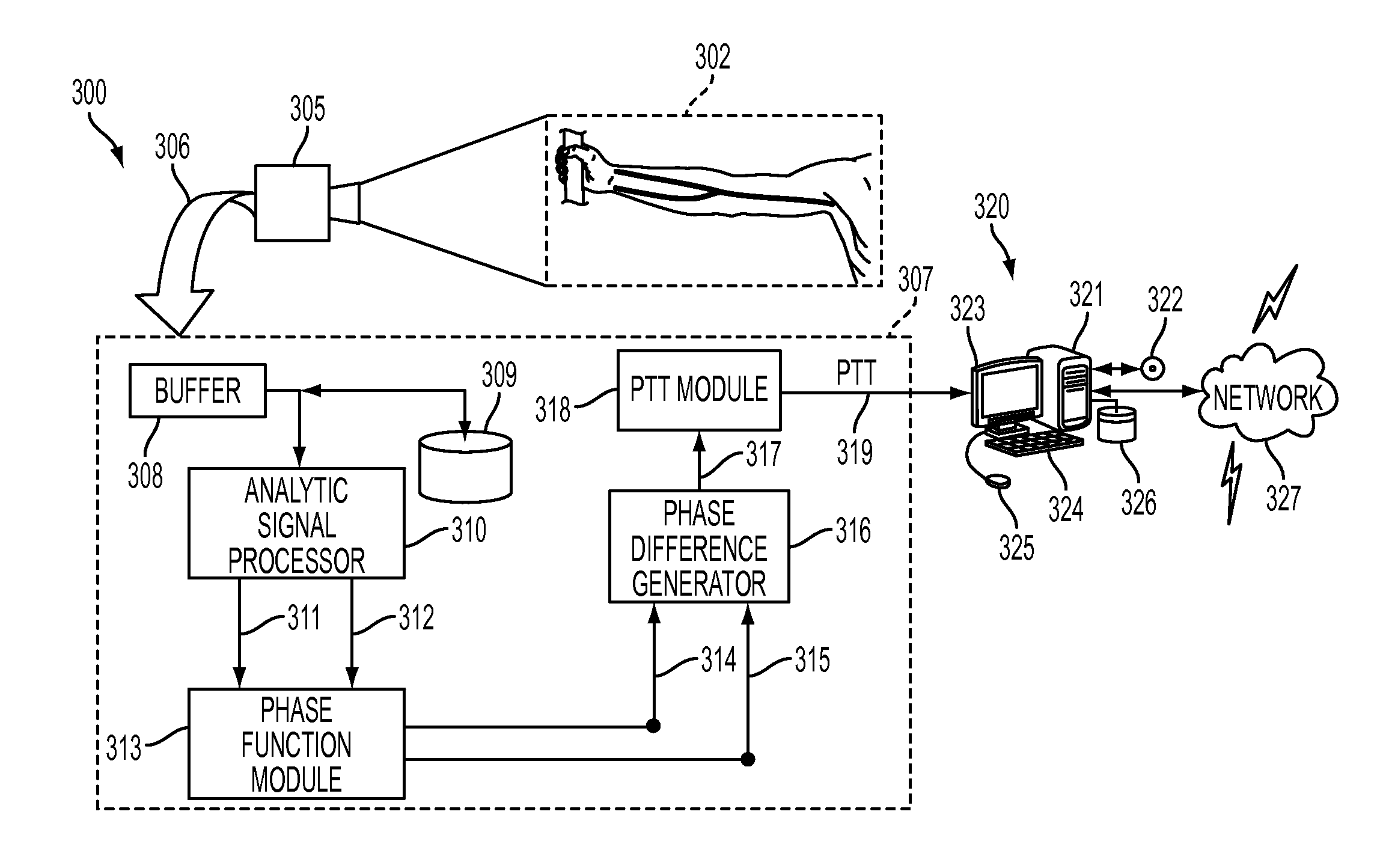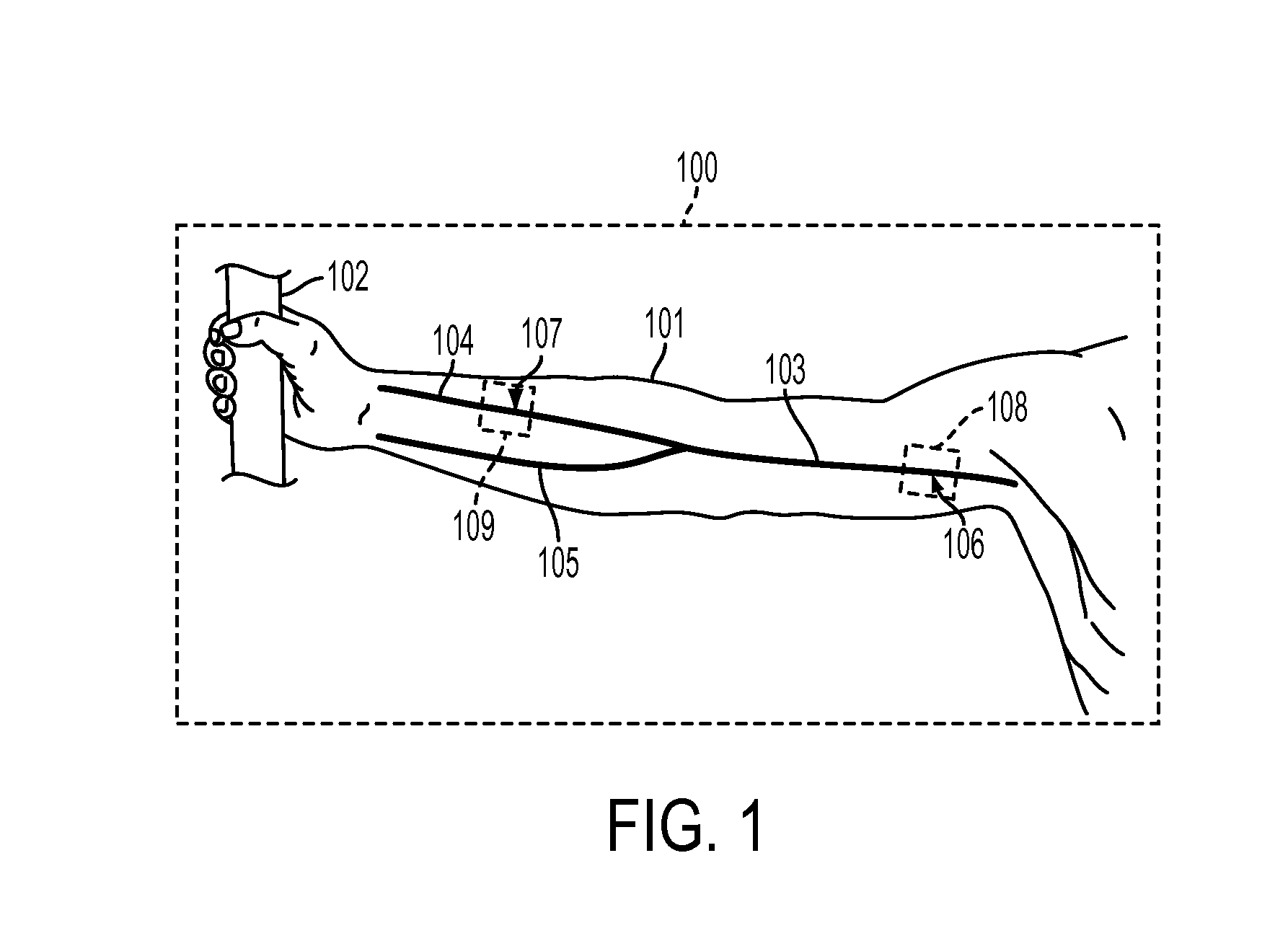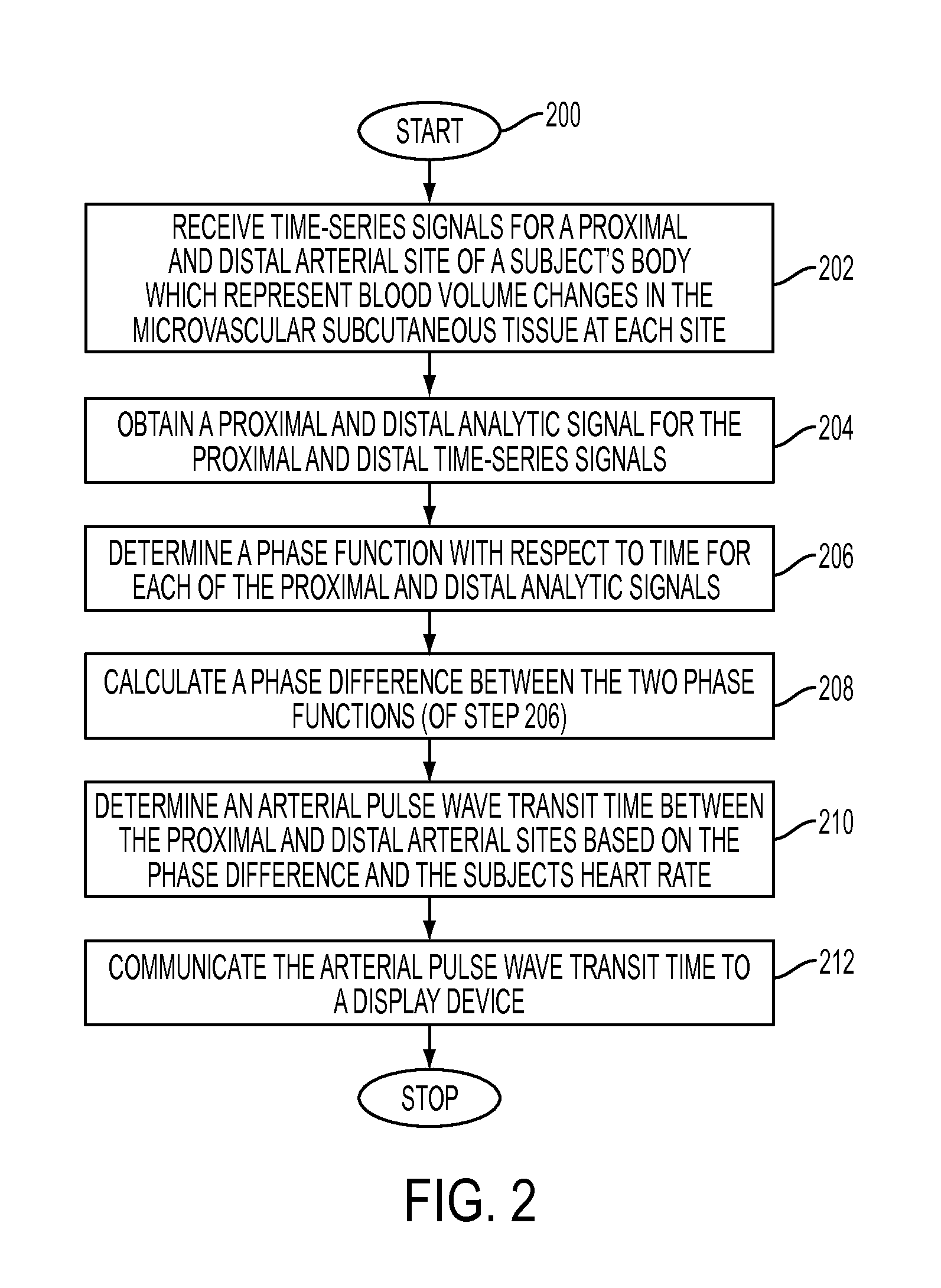Determining arterial pulse transit time from time-series signals obtained at proximal and distal arterial sites
- Summary
- Abstract
- Description
- Claims
- Application Information
AI Technical Summary
Benefits of technology
Problems solved by technology
Method used
Image
Examples
Embodiment Construction
[0019]What is disclosed is a system and method for determining arterial pulse wave transit time for a subject in real-time and on a continuous basis.
Non-Limiting Definitions
[0020]A “subject” refers to a living being. Although the term “person” or “patient” may be used throughout this disclosure, it should be appreciated that the subject may be something other than a human such as, for example, a primate. Therefore, the use of such terms is not to be viewed as limiting the scope of the appended claims strictly to human subjects.
[0021]“Proximal” is from the Latin proximus: meaning nearest to. A proximal point in the arterial network is a point which is closer to the heart.
[0022]“Distal” is from the Latin distare: meaning away from. For the purposes hereof, a distal point in the arterial network is a point which is downstream from the proximal point in the arterial network.
[0023]An “arterial pulse pressure wave” is a wave created throughout the vascular system when the left ventricle o...
PUM
 Login to View More
Login to View More Abstract
Description
Claims
Application Information
 Login to View More
Login to View More - R&D
- Intellectual Property
- Life Sciences
- Materials
- Tech Scout
- Unparalleled Data Quality
- Higher Quality Content
- 60% Fewer Hallucinations
Browse by: Latest US Patents, China's latest patents, Technical Efficacy Thesaurus, Application Domain, Technology Topic, Popular Technical Reports.
© 2025 PatSnap. All rights reserved.Legal|Privacy policy|Modern Slavery Act Transparency Statement|Sitemap|About US| Contact US: help@patsnap.com



